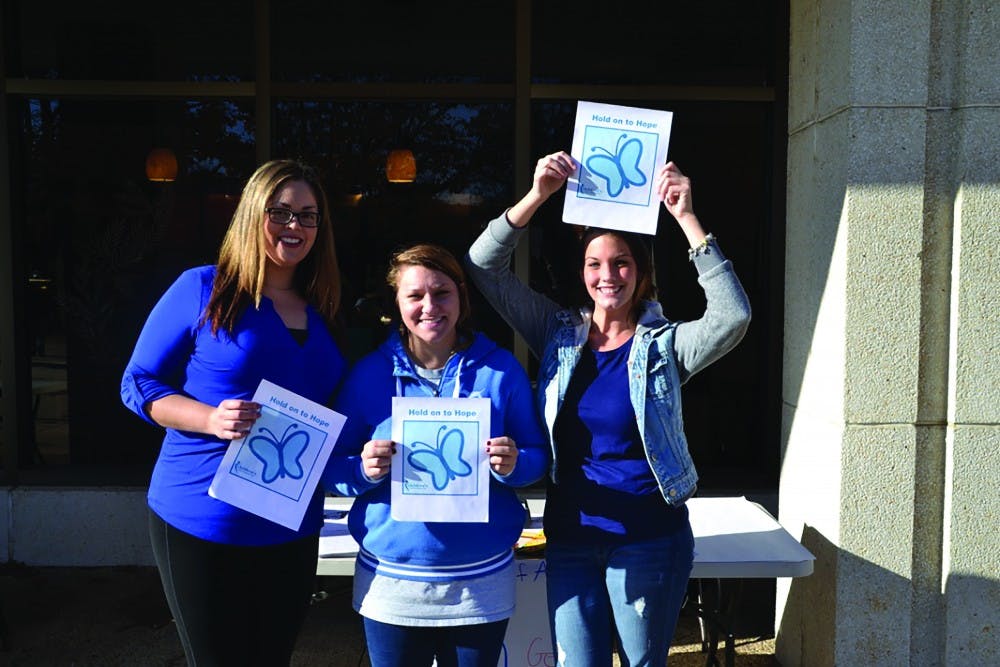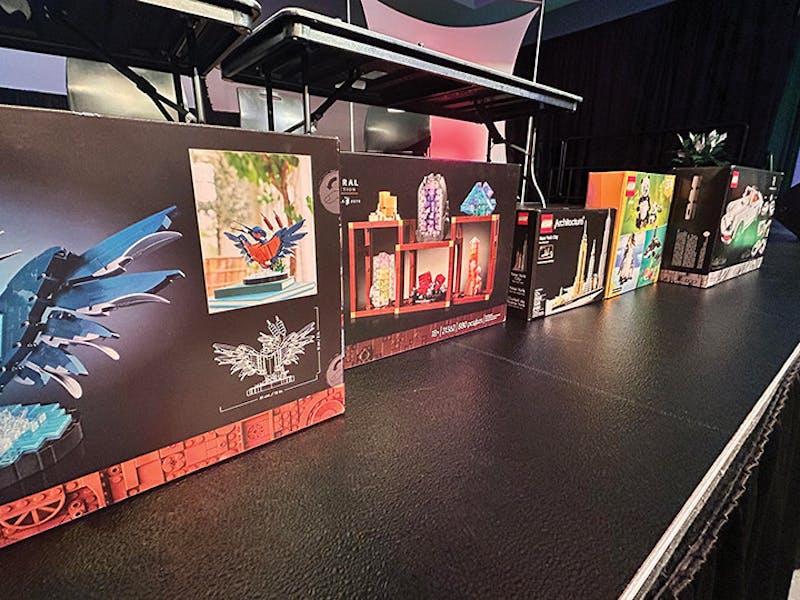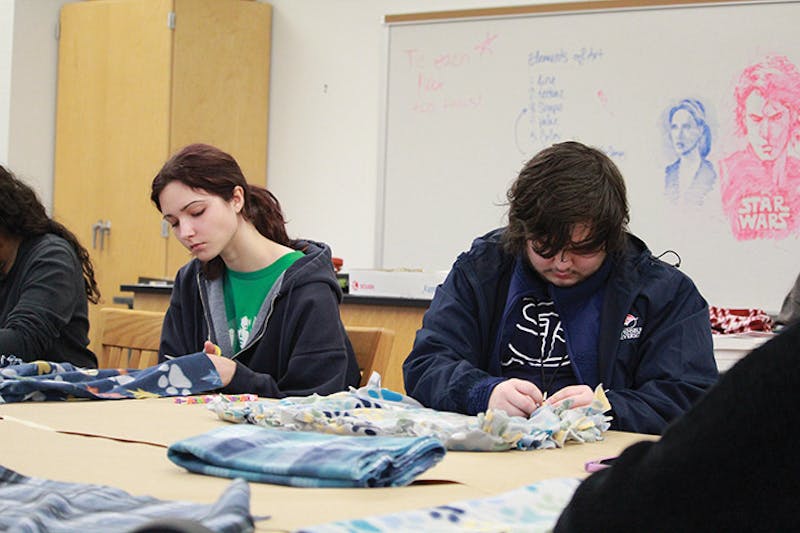A kaleidoscope of paper butterflies stood blanketed in the afternoon’s long amber light outside of Ezra Lehman Memorial Library last Thursday in honor of Children’s Grief Awareness day.
Students were invited by both learning and counseling center graduate assistants to write the names of those they had lost on a blue or white butterfly, along with words of commemoration in the hope of creating a safe place for students to talk about their grief.
“Many college students have younger siblings, children of their own, or maybe they lost someone when they were young,” learning center graduate assistant Nikita Mahon said. “That experience may have had a bigger impact on them than they ever realized. We want to give them the opportunity to reflect and decide if they’d like to start talking about it.”
A message in chalk outside of the library read “Children’s Grief Awareness” and “Hold onto Hope” partnered with a rendering of a butterfly enticed students and professors passing the library to visit the table decorated with literature on grief and loss. Many people were initially hesitant at the idea of speaking about grief, but the open tone the graduate assistants used with them eased their mood, and they soon took pen to paper to celebrate their lost loved ones.
Some students wrote the date below the name of the late while others wrote small messages of “miss you” and “you are missed and loved.” One butterfly simply read, “Mom and Dad.”
Mahon went on to explain that a child’s grief looks different than the grief of an adult and that it can sometimes go undetected for years because of this reason. She explained the way children understand death, saying that depending on where the child is developmentally will determine the amount of times the child will need to be reminded of the loss.
“It is important to communicate to the child clearly what has happened and who has died,” Mahon said, who further explained that children need a tangible description of what has happened, such as “their heart has stopped pumping” or “there is no more blood in their body and that is why they are dead.”
“It is so important to give the child those concrete examples that way they can really hold onto something they can understand,” Mahon elaborated.
Counseling center graduate assistant, Olivia Hauber, added that although it is not obvious, young non-verbal children also feel the impact of loss.
“A lot of the time people will look over infants, thinking that they can’t grieve,” Hauber said. “They do grieve but it is not verbal.”
Kathryn Brooks, who runs the private counseling practice Brooks Kathryn on King Street in Shippensburg, crafted origami tie-dye butterflies to hand out to students. She described that a child in grief often appears to be okay, but that their grief can seem invisible.
“As a culture we hide from grief,” graduate student Rich Lamp said. “It is something that is not talked about until it happens, but I think things like this (event) help to change the tone of the conversation.”
Lamp added that the visual representation of grief in the commemoration butterflies opens the door to allow fellow students to connect with one another through their loss.
Student Jolene Johnston was both surprised and happy when she visited the Children’s Grief Awareness table.
“I am glad they are doing this,” Johnston said. “In my sociology of death and dying class we talk about how important the grieving process is and how taboo it is considered to talk about it. It is nice to see people trying to bring awareness to it.”
“Activities like this are a first step that you can take to acknowledge and take the time to think about that impact of death without having to feel vulnerable by talking about it with others,” Mohan said.




The Slate welcomes thoughtful discussion on all of our stories, but please keep comments civil and on-topic. Read our full guidelines here.